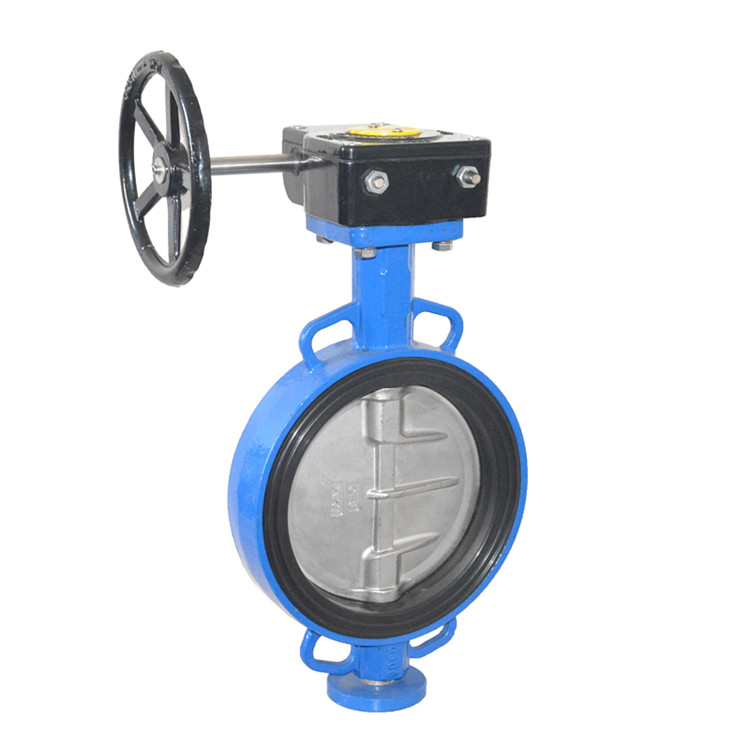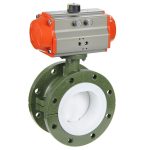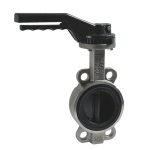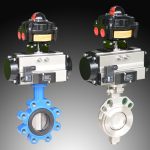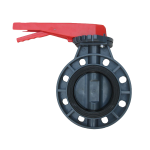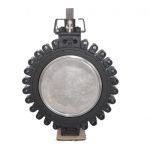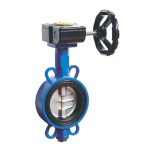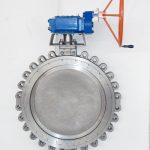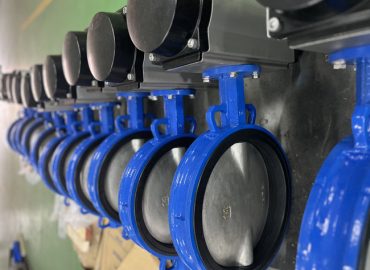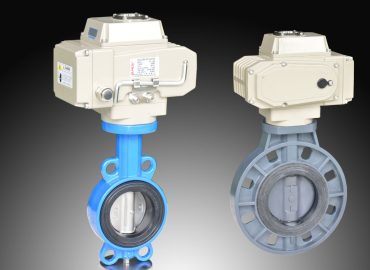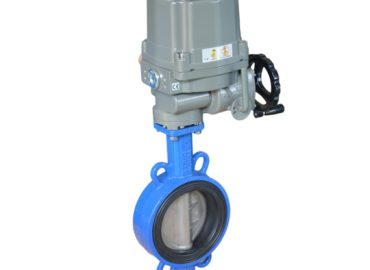Butterfly valves play a crucial role in controlling fluid flow in various industries, ranging from water treatment to HVAC systems and industrial process control. As such, understanding the factors that contribute to their performance is essential for selecting the right valve for your application. Among these factors, size and shape hold significant importance. In this blog post, we will explore how the size and shape of a 12″ butterfly valve affect its performance, delving into the advantages and potential drawbacks of using a larger valve, the impact of different shapes on functionality, and real-world examples of these valves in action. By understanding these variables, you can make more informed decisions when choosing a butterfly valve for your specific needs.
Introduction
The size and shape of a butterfly valve play a pivotal role in determining its performance, as they directly impact key factors such as flow capacity, pressure drop, and control over the flow rate. A 12″ butterfly valve, for instance, typically offers increased flow capacity compared to smaller valves, allowing for more efficient fluid handling in high-flow applications. This larger size also leads to reduced pressure drop across the valve, resulting in better energy efficiency and less strain on the entire system. However, bigger valves may come with certain drawbacks, such as higher costs, increased space requirements, and greater installation complexity. In terms of shape, butterfly valves are available in various designs, including round or circular, elliptical or oval, and custom-shaped options. The shape influences the valve’s functionality and overall performance, with each design offering specific advantages based on the application. For example, elliptical valves can provide better sealing capabilities and improved flow control, while custom-shaped valves can be tailored to meet unique requirements. Furthermore, other design aspects, such as seat material, shaft design, and actuator type, also contribute to the performance of a butterfly valve. Ultimately, understanding the interplay between the size and shape of a 12″ butterfly valve and its performance is crucial for making an informed decision when selecting the ideal valve for your specific application.
Brief overview of butterfly valves
Butterfly valves are a type of flow control device used in various industries and applications for regulating and isolating the flow of fluids, such as liquids, gases, and slurries. They consist of a disc mounted on a rotating shaft, which can be turned to either fully open, partially open, or completely close the valve, thereby controlling the flow rate. Butterfly valves are known for their compact design, cost-effectiveness, and ease of operation, making them a popular choice for many systems. They are commonly employed in water treatment plants, HVAC systems, chemical processing facilities, and oil and gas pipelines, among other applications. There are several types of butterfly valves, including concentric, double-eccentric, and triple-eccentric designs, each with its own set of advantages and performance characteristics. When selecting a butterfly valve, it is essential to consider factors such as size, shape, material compatibility, and pressure ratings to ensure optimal performance and longevity in the given application.
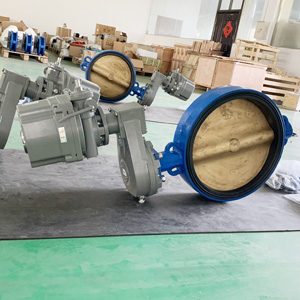
Importance of size and shape in valve performance
The size and shape of a valve are crucial factors that significantly impact its performance, as they directly influence flow capacity, pressure drop, and the ability to control fluid flow. The size of a valve determines the volume of fluid it can handle, with larger valves typically offering higher flow capacities. This makes them suitable for applications requiring efficient fluid management at high flow rates. Conversely, smaller valves might be more appropriate for systems with space constraints or lower flow requirements. The shape of a valve, on the other hand, affects its sealing capabilities, flow characteristics, and overall functionality. Different shapes and designs, such as round, elliptical, or custom-shaped valves, cater to specific application requirements, providing unique advantages based on the system’s demands. For instance, elliptical valves may offer better sealing and flow control, while custom-shaped valves can be tailored to meet specific needs. Ultimately, understanding the importance of size and shape in valve performance is essential for selecting the ideal valve type that ensures optimal efficiency, reliability, and longevity in any given application.
Purpose of this blog post (exploring the effects of size and shape on the performance of a 12″ butterfly valve)
The purpose of this blog post is to investigate and provide insight into the effects of size and shape on the performance of a 12″ butterfly valve. By exploring these critical factors, we aim to equip readers with the knowledge required to make informed decisions when selecting and implementing butterfly valves in their respective applications. Through examining the advantages and potential drawbacks of using a larger valve, the impact of various shapes on functionality, and real-world examples of 12″ butterfly valves in action, we hope to shed light on how these variables contribute to overall valve performance. This understanding is essential for ensuring optimal efficiency, reliability, and longevity in systems that rely on butterfly valves for fluid flow control and regulation.
The Basics of Butterfly Valves
Butterfly valve are a versatile and widely used flow control device designed to regulate and isolate fluid flow in a diverse range of industries and applications. The fundamental design of a butterfly valve consists of a disc mounted on a rotating shaft, positioned within the flow path of the fluid. By turning the shaft, the disc can be adjusted to fully open, partially open, or completely close the valve, thereby controlling the flow rate. The simplicity and compact nature of this design make butterfly valves an attractive option for many systems, as they offer cost-effectiveness, ease of operation, and require less space compared to other valve types. Butterfly valves can be found in various settings, such as water treatment plants, HVAC systems, chemical processing facilities, and oil and gas pipelines. There are several types of butterfly valves, including concentric, double-eccentric, and triple-eccentric designs, each offering unique performance characteristics and advantages. The concentric design features a central axis, while double-eccentric and triple-eccentric designs have off-center shafts and discs, providing improved sealing capabilities and reduced wear on the valve components. When selecting a butterfly valve, it is essential to consider factors like size, shape, material compatibility, pressure ratings, and application requirements to ensure optimal performance, efficiency, and longevity in the chosen system.
Definition and function of butterfly valves
Butterfly valves are a type of flow control device defined by their unique design, which features a disc mounted on a rotating shaft within the fluid flow path. Their primary function is to regulate and isolate the flow of various fluids, such as liquids, gases, and slurries, in a wide range of industries and applications. By turning the shaft, the disc can be positioned to fully open, partially open, or completely close the valve, allowing precise control over the flow rate. Butterfly valves are known for their compact design, cost-effectiveness, and ease of operation, making them an ideal choice for many systems requiring efficient fluid flow management. They are commonly employed in water treatment plants, HVAC systems, chemical processing facilities, and oil and gas pipelines, among other applications, providing reliable performance and versatility across diverse settings.

Common applications for butterfly valves
Butterfly valves are widely used in various industries and applications due to their versatile design, cost-effectiveness, and ease of operation. Some common applications for butterfly valves include water treatment plants, where they regulate the flow of water through filtration systems and ensure proper distribution within the plant. In HVAC systems, butterfly valves are often used to control the flow of heating or cooling fluids, maintaining optimal temperature conditions for both residential and commercial buildings. Chemical processing facilities utilize butterfly valves to handle the flow of corrosive and hazardous chemicals, ensuring safe and efficient processing operations. Oil and gas pipelines employ butterfly valves for regulating the flow of oil, natural gas, and other hydrocarbon products, contributing to the safe and reliable transportation of these valuable resources. Additionally, butterfly valves can be found in food and beverage processing plants, pharmaceutical manufacturing, and power generation facilities, showcasing their adaptability and effectiveness across a broad range of applications.
Types of butterfly valves (e.g., concentric, double-eccentric, triple-eccentric)
Butterfly valves are available in various types, each offering unique performance characteristics and advantages to cater to specific application requirements. The most common types of butterfly valves include concentric, double-eccentric, and triple-eccentric designs. Concentric butterfly valves feature a disc and shaft that share a common central axis, providing a straightforward design suitable for low-pressure applications. Double-eccentric butterfly valves, also known as high-performance butterfly valves, have an off-center shaft and a disc with an offset axis. This design reduces the contact between the disc and the seat, minimizing wear and improving sealing capabilities. Triple-eccentric butterfly valves, or triple offset butterfly valves, take this concept further by incorporating an additional offset, which eliminates friction between the disc and seat even more effectively. This results in enhanced sealing performance, making them ideal for high-pressure and high-temperature applications where tight shut-off is critical. Each type of butterfly valve offers specific benefits and is suited to different operating conditions, making it essential to consider factors such as pressure, temperature, and fluid compatibility when selecting the appropriate valve for a given application.
Size Matters: The Impact of a 12″ Butterfly Valve
The size of a butterfly valve plays a crucial role in determining its flow capacity, pressure drop, and overall performance within a system. A 12″ butterfly valve, for instance, offers distinct advantages and considerations compared to smaller or larger valves. With a larger disc and flow area, a 12″ butterfly valve can handle increased flow rates, making it suitable for applications that demand efficient fluid management at high volumes. The larger size also contributes to a lower pressure drop across the valve, as the fluid experiences less resistance while passing through the valve, resulting in improved energy efficiency in the system. However, the larger dimensions of a 12″ butterfly valve may require additional space for installation, which might be a challenge in systems with limited room or tight configurations. Additionally, the increased size of the valve components could lead to higher torque requirements for operation, potentially necessitating stronger actuators and more robust mounting hardware. Despite these challenges, the benefits of a 12″ butterfly valve, such as enhanced flow capacity and reduced pressure drop, often outweigh the drawbacks, making them an attractive option for various applications. It is essential to carefully consider the specific system requirements, available space, and desired flow characteristics when selecting the optimal size of a butterfly valve to ensure maximum performance, efficiency, and longevity in the intended application.
Why the size of a butterfly valve is important
The size of a pneumatic butterfly valve is an essential factor in determining its suitability and effectiveness within a specific application. The size directly impacts the flow capacity, pressure drop, and overall performance of the valve in regulating and isolating fluid flow. Larger butterfly valves can handle higher flow rates and typically exhibit lower pressure drops, making them ideal for applications that require efficient fluid management at high volumes. Conversely, smaller butterfly valves are better suited for systems with limited space or lower flow rate requirements. Additionally, the size of a butterfly valve influences its torque requirements, affecting the choice of actuators and mounting hardware needed for proper operation. Ultimately, selecting the appropriate size of a butterfly valve is critical to ensure optimal performance, energy efficiency, and reliability in the system it serves. Careful consideration of factors such as flow rate, available space, and desired flow characteristics is crucial when choosing the right size butterfly valve for a given application.

Advantages of using a 12″ butterfly valve
A 12″ butterfly valve offers several advantages that make it an appealing choice for a wide range of applications and industries. One of the main benefits is its capacity to handle increased flow rates due to its larger disc size and flow area, allowing it to efficiently manage high volumes of fluid in systems that require effective flow control on a larger scale. Additionally, the larger dimensions of a 12″ butterfly valve contribute to a lower pressure drop across the valve, meaning that fluids experience less resistance when passing through, which results in enhanced energy efficiency within the system. Moreover, the improved sealing capabilities of larger butterfly valves can provide better shut-off performance, ensuring a more reliable and leak-free operation. These advantages, coupled with the inherent simplicity, compactness, and cost-effectiveness of butterfly valves, make a 12″ butterfly valve an attractive option for various applications, including water treatment plants, chemical processing facilities, and oil and gas pipelines. However, it is crucial to carefully consider factors such as flow rate, available space, and specific system requirements when selecting the optimal size of a butterfly valve to ensure maximum performance, efficiency, and longevity.
Potential disadvantages of a larger butterfly valve
While larger butterfly valves offer several advantages, such as increased flow capacity and reduced pressure drop, there are potential disadvantages that should be considered when selecting a valve for a specific application. One of the primary drawbacks of a larger butterfly valve is its increased size, which may require additional space for installation, posing challenges in systems with limited room or tight configurations. Additionally, the greater dimensions of the valve components can lead to higher torque requirements for operation, potentially necessitating stronger actuators and more robust mounting hardware, which could increase overall costs and complexity. Furthermore, the weight of a larger butterfly valve may be significantly higher than that of a smaller one, posing potential challenges for transportation, handling, and installation. Finally, larger butterfly valves may be more susceptible to flow-induced vibration, which could result in increased wear and tear on the valve components, reducing their service life. It is essential to carefully evaluate the specific system requirements, available space, and desired flow characteristics when selecting the optimal size of a butterfly valve to ensure maximum performance, efficiency, and longevity.
Shape and Design: Key Factors in Butterfly Valve Performance
The shape and design of a butterfly valve play critical roles in determining its performance, efficiency, and overall suitability for specific applications. Butterfly valves consist of a disc mounted on a rotating shaft and enclosed within a pipe or housing, with the disc’s rotation controlling the flow of fluid through the valve. The shape of the disc, as well as its orientation and position relative to the shaft, can significantly impact the valve’s flow characteristics, pressure drop, and sealing capabilities.
One key aspect of butterfly valve design is the disc’s profile, which can be flat, conical, or spherical, among other shapes. Each disc profile offers unique performance characteristics; for instance, a conical disc provides enhanced sealing capabilities due to its ability to create a tighter contact with the valve seat, while a flat disc may offer lower resistance to flow, resulting in reduced pressure drop. Another essential factor is the disc’s orientation relative to the shaft, which can be either concentric, double-eccentric, or triple-eccentric. Each offset configuration has distinct advantages, with concentric designs offering simplicity and affordability, double-eccentric designs providing improved wear resistance and sealing performance, and triple-eccentric designs further minimizing friction between the disc and seat for superior shut-off capabilities.
Moreover, the materials used to construct the valve components, such as the disc, seat, and body, can significantly impact the valve’s performance, corrosion resistance, and compatibility with various fluids. For example, stainless steel is often used for its durability and resistance to corrosion, while elastomeric materials like EPDM or Nitrile can be employed for their excellent sealing properties and compatibility with a wide range of fluids.

The design of the valve’s actuation mechanism, which can include manual, pneumatic, hydraulic, or electric actuators, is another crucial consideration, as it directly influences the valve’s operational efficiency, control accuracy, and overall reliability. The choice of actuator depends on factors such as the required torque, speed of operation, and specific application requirements.
In summary, the shape and design of a butterfly valve are key factors that directly impact its performance, efficiency, and suitability for various applications. Careful consideration of factors such as disc profile, offset configuration, material selection, and actuation mechanism is essential to ensure optimal valve performance, longevity, and compatibility with the intended system requirements.
The effect of shape on butterfly valve functionality
The shape of a electric butterfly valve, particularly the disc’s profile, has a direct impact on its functionality and overall performance within a given system. The disc’s shape influences the valve’s flow characteristics, pressure drop, sealing capabilities, and even its resistance to wear. Different disc profiles, such as flat, conical, or spherical, offer unique performance attributes. For instance, a conical disc provides enhanced sealing capabilities due to its ability to create a tighter contact with the valve seat, ensuring reliable shut-off and leak prevention. On the other hand, a flat disc profile may offer lower resistance to flow, resulting in reduced pressure drop and improved energy efficiency within the system. Ultimately, the shape of the butterfly valve disc plays a crucial role in determining its suitability for specific applications, making it essential to carefully consider the desired flow characteristics, sealing performance, and system requirements when selecting the optimal valve design.
Different shapes of butterfly valves and their advantages
Different shapes of butterfly valves cater to various applications and offer distinct advantages based on their design. The primary shapes are related to the disc profile and offset configuration, each with unique performance characteristics. Flat discs, for example, provide lower resistance to fluid flow, resulting in reduced pressure drop and improved energy efficiency within the system. Conical discs, on the other hand, offer enhanced sealing capabilities due to their ability to create a tighter contact with the valve seat, ensuring reliable shut-off and leak prevention. Spherical discs can deliver a combination of efficient flow control and effective sealing, making them suitable for a wide range of applications.
When it comes to offset configurations, concentric designs are simple and affordable, featuring a disc that rotates around the central axis of the valve. These valves are ideal for low-pressure systems where tight shut-off is not a primary concern. Double-eccentric, or high-performance butterfly valves, have an off-center disc and shaft, which reduces friction between the disc and seat, improving wear resistance and sealing performance. Triple-eccentric, or triple-offset butterfly valves, further minimize friction by incorporating an additional offset in the disc’s geometry, providing superior shut-off capabilities and extended service life, particularly in high-pressure and high-temperature applications.
In conclusion, the diverse shapes of butterfly valves, including disc profiles and offset configurations, offer specific advantages that make them suitable for a variety of applications. Careful consideration of the desired flow characteristics, sealing performance, and system requirements is essential when selecting the optimal butterfly valve design.
How design features like seat material, shaft design, and actuator type influence performance
Design features such as seat material, shaft design, and actuator type play a significant role in the performance and functionality of butterfly valves within a system. Seat material, for instance, directly impacts the valve’s sealing capabilities, compatibility with various fluids, and resistance to wear and corrosion. Elastomeric materials like EPDM or Nitrile offer excellent sealing properties and compatibility with a wide range of fluids, while materials like PTFE provide chemical resistance and durability in aggressive environments.
Shaft design is another crucial factor that influences the valve’s operational efficiency, wear resistance, and overall reliability. For example, a one-piece shaft offers increased strength and stability, while a two-piece or split shaft can provide better alignment and reduced torque requirements. The shaft’s design is also integral to the overall offset configuration of the valve, which affects the friction between the disc and seat, impacting sealing performance and service life.
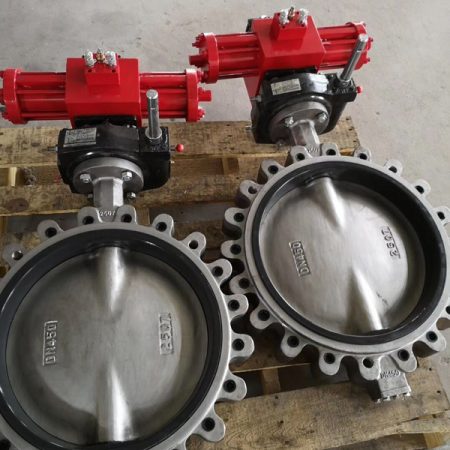
The choice of actuator type is vital in determining the valve’s control accuracy, response time, and adaptability to different system requirements. Manual actuators are simple and cost-effective but may lack the precision and speed required for certain applications. Pneumatic actuators offer fast and efficient operation, suitable for systems requiring rapid response times, while hydraulic actuators provide high torque output and precise control in high-pressure environments. Electric actuators deliver accurate positioning and ease of integration with automation systems, enabling remote operation and monitoring.
In conclusion, design features such as seat material, shaft design, and actuator type significantly influence the performance, efficiency, and overall suitability of butterfly valves for specific applications. Careful consideration of these factors is essential when selecting the appropriate valve design to ensure optimal system performance and longevity.
Real-World Applications: Case Studies of 12″ Butterfly Valves in Action
12″ butterfly valves have been successfully employed in various real-world applications, showcasing their versatility, efficiency, and adaptability to different system requirements. In water treatment plants, for instance, these larger butterfly valves are used for efficient flow control and regulation of large volumes of water, ensuring consistent supply and distribution throughout the facility. The enhanced sealing capabilities and low-pressure drop characteristics of 12″ butterfly valves contribute to reduced energy consumption and increased operational efficiency in these plants.
In the oil and gas industry, 12″ butterfly valves are often installed in pipelines and processing facilities, where they play a crucial role in maintaining the safe and efficient transport of crude oil, natural gas, and other petrochemical products. Their ability to handle high flow rates, withstand extreme temperatures and pressures, and provide reliable shut-off performance make them an ideal choice for such demanding applications. Additionally, the use of specialized materials and coatings on valve components ensures compatibility with aggressive fluids and resistance to corrosion, further enhancing their longevity and reliability.
Another case study involves the chemical processing industry, where 12″ butterfly valves are utilized for controlling the flow of various chemicals, acids, and other corrosive substances. In these applications, selecting the appropriate seat material, disc profile, and actuator type is essential to ensure optimal compatibility with the processed media, as well as precise flow control and accurate response to changing process conditions. The ability to customize the design and materials of 12″ butterfly valves enables them to meet the stringent safety and performance requirements of the chemical processing industry.
Furthermore, 12″ butterfly valves can also be found in HVAC systems, power plants, and food and beverage processing plants, among other industries. Each application showcases the adaptability and effectiveness of these larger butterfly valves in meeting diverse system requirements, providing efficient flow control, reliable shut-off performance, and long service life. These case studies highlight the importance of carefully considering factors such as flow rate, available space, and specific system demands when selecting the optimal size and design of butterfly valves to ensure maximum performance, efficiency, and longevity.
Example 1: Water treatment plant
In a water treatment plant, butterfly valves play a crucial role in managing the flow of water through various stages of the treatment process, ensuring efficient operation and consistent water quality. For example, 12″ butterfly valves may be installed at critical points within the plant, such as intake and discharge lines, filtration systems, and chemical dosing units. Their ability to handle large volumes of water, coupled with their low-pressure drop characteristics, contributes to reduced energy consumption and increased operational efficiency. Moreover, the selection of corrosion-resistant materials and proper sealing components ensures compatibility with treated water and chemicals used in the process, enhancing the valve’s reliability and service life. In this application, 12″ butterfly valves demonstrate their adaptability and effectiveness in meeting the specific demands of water treatment plants, providing precise flow control, reliable shut-off performance, and long-lasting durability.
Example 2: HVAC system in a commercial building
In a commercial building’s HVAC system, butterfly valves serve as essential components for regulating the flow of air, water, or other fluids throughout the heating, ventilation, and air conditioning processes. The use of 12″ butterfly valves in large-scale HVAC systems enables efficient management of fluid flow rates, contributing to optimal indoor climate control and energy efficiency. These valves are typically installed at strategic points within the system, such as chillers, cooling towers, and air handling units, where they provide precise flow control and ensure a balanced distribution of resources. The selection of appropriate materials and sealing components for the 12″ butterfly valves ensures compatibility with the various fluids used in HVAC systems, as well as resistance to wear and corrosion, resulting in a reliable and long-lasting solution. In this application, 12″ butterfly valves showcase their versatility and efficacy in catering to the unique demands of commercial building HVAC systems, offering accurate flow regulation, energy efficiency, and dependable performance.
Example 3: Industrial process control
In industrial process control applications, butterfly valves play a vital role in managing the flow of fluids, gases, and other materials throughout various stages of production. The implementation of 12″ butterfly valves in large-scale processing facilities allows for efficient flow control and regulation, ensuring consistent product quality and adherence to safety standards. These valves can be found in diverse industries such as petrochemical, pharmaceutical, and food and beverage processing, where they are installed at critical junctures like mixing tanks, reactors, and transfer lines. The ability to customize the design, materials, and actuator types of 12″ butterfly valves enables them to meet the specific requirements of each industry, providing precise control, reliable shut-off performance, and compatibility with different media. In industrial process control applications, 12″ butterfly valves demonstrate their adaptability and effectiveness in addressing complex system demands, contributing to enhanced productivity, safety, and operational efficiency.
Factors to Consider When Choosing a 12″ Butterfly Valve
When selecting a 12″ butterfly valve for a specific application, several factors must be taken into account to ensure optimal performance, efficiency, and longevity. First and foremost, it is crucial to consider the type of fluid or gas being handled, as this will directly influence the choice of materials for the valve components, such as the disc, seat, and body. Compatibility with the media is essential to prevent corrosion, wear, and potential leakage, ensuring reliable operation and extended service life.
Another critical factor is the operating conditions of the system, including pressure, temperature, and flow rate requirements. Understanding these parameters will help in determining the appropriate disc profile, offset configuration, and actuator type for the 12″ butterfly valve. For instance, high-performance or triple-offset butterfly valves may be more suitable for high-pressure or high-temperature applications, while concentric designs could suffice for low-pressure systems.
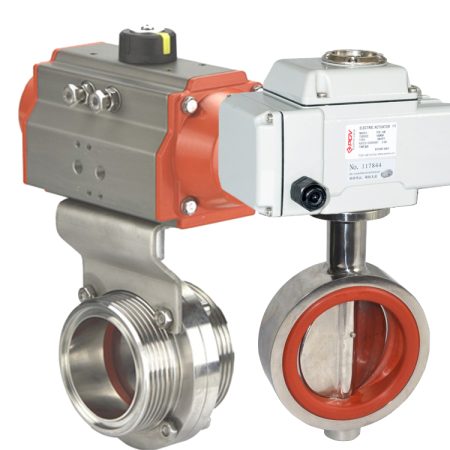
The degree of control accuracy and response time required by the application should also be considered when selecting the actuator type. Manual actuators may be adequate for simple on-off control, while pneumatic, hydraulic, or electric actuators can offer improved precision, speed, and automation capabilities, depending on the specific demands of the system.
Furthermore, the available space and installation requirements within the system play a role in choosing the right 12″ butterfly valve design. Factors such as the valve’s face-to-face dimension, flange connections, and ease of maintenance should be evaluated to ensure seamless integration with the existing infrastructure and minimal disruption during installation or servicing.
Lastly, the overall cost of ownership, including initial investment, maintenance, and energy consumption, should be factored into the decision-making process. While certain designs and materials may have a higher upfront cost, their long-term benefits in terms of performance, durability, and reduced energy usage could outweigh the initial expense, resulting in a more cost-effective solution over time.
In conclusion, considering factors such as media compatibility, operating conditions, control requirements, installation constraints, and cost of ownership is essential when selecting the appropriate 12″ butterfly valve for a specific application. A thorough evaluation of these aspects will help ensure optimal system performance and efficiency, as well as a reliable and long-lasting valve solution.
Flow requirements and pressure drop considerations
Flow requirements and pressure drop considerations are crucial factors when selecting a butterfly valve for any given application. Understanding the specific flow rate requirements of a system helps determine the appropriate valve size and design, ensuring efficient operation and accurate flow control. Pressure drop, on the other hand, refers to the reduction in fluid pressure as it passes through the valve, which can impact the overall efficiency and energy consumption of the system. Selecting a butterfly valve with a low-pressure drop characteristic, such as a streamlined disc profile and optimized offset configuration, can contribute to reduced energy costs and improved system performance. Additionally, it is essential to consider the valve’s Cv (flow coefficient) value, which indicates its capacity to handle different flow rates with minimal pressure loss. Balancing the flow requirements and pressure drop considerations when choosing a butterfly valve will help optimize system performance, enhance energy efficiency, and ensure the long-term reliability of the valve solution.
Space constraints and installation requirements
Space constraints and installation requirements are significant factors to consider when selecting a butterfly valve for a specific application. The available space within the system can dictate the choice of valve design, size, and actuator type, ensuring seamless integration and ease of maintenance. Butterfly valves, with their compact and lightweight nature, offer an advantage over other valve types in situations where space is limited, making them a popular choice for various industries. It is crucial to evaluate the valve’s face-to-face dimensions, flange connections, and actuator footprint to confirm compatibility with the existing infrastructure and minimize disruption during installation or servicing. Additionally, accessibility for routine maintenance and potential component replacement should be considered, as this can impact the overall cost of ownership and system uptime. By carefully assessing space constraints and installation requirements, the right butterfly valve can be selected, providing efficient flow control, reliable performance, and ease of maintenance in a compact form factor.
Material compatibility and corrosion resistance
Material compatibility and corrosion resistance are vital considerations when selecting a butterfly valve for any application. The type of fluid or gas being handled directly influences the choice of materials for the valve components, such as the disc, seat, and body. Ensuring compatibility with the media is essential to prevent chemical reactions, corrosion, wear, and potential leakage, which could lead to system failure, reduced efficiency, and increased maintenance costs. Common materials used in butterfly valves include stainless steel, ductile iron, bronze, and various plastic and elastomer options for seats and seals, each offering different levels of corrosion resistance and compatibility with specific fluids or gases. It is crucial to evaluate the chemical properties of the media, as well as the operating temperature and pressure conditions, to determine the most suitable materials for the valve components. By carefully considering material compatibility and corrosion resistance, a reliable and long-lasting butterfly valve solution can be selected, ensuring optimal system performance and extended service life.
Maintenance and life cycle costs
Maintenance and life cycle costs are important factors to consider when selecting a butterfly valve for any application. The overall cost of ownership includes not only the initial investment in the valve but also the ongoing expenses associated with maintenance, repairs, replacement parts, and energy consumption throughout its service life. By choosing a butterfly valve with durable materials, robust design, and compatibility with the system’s media and operating conditions, the frequency of maintenance and potential for component failure can be minimized, resulting in lower long-term costs. Additionally, selecting a valve with a low-pressure drop characteristic and efficient actuator type can contribute to reduced energy usage, further lowering the overall life cycle costs. It is essential to weigh the upfront investment against the potential long-term benefits in terms of performance, durability, and energy efficiency when choosing a butterfly valve. By carefully considering maintenance and life cycle costs, a more cost-effective and reliable valve solution can be selected, ensuring optimal system performance and an extended service life.
Conclusion
In conclusion, the size and shape of a 12″ butterfly valve have a significant impact on its performance, efficiency, and suitability for various applications. As one of the most versatile and widely used flow control devices, butterfly valves must be carefully selected to ensure they meet the specific requirements of each system, with the 12″ size being particularly popular in many industries due to its capacity to handle larger flow rates and pressures.
The disc profile and offset configuration are critical aspects of the butterfly valve’s shape that influence its performance. A streamlined disc profile can minimize pressure drop, reducing energy consumption and enhancing overall system efficiency. The choice between concentric, double-offset, or triple-offset designs is determined by factors such as pressure and temperature ratings, sealing performance, and control accuracy requirements. For instance, high-performance or triple-offset butterfly valves are better suited for high-pressure or high-temperature applications, while concentric designs may suffice for low-pressure systems.
The size of the 12″ butterfly valve directly affects its flow capacity, with larger valves being capable of handling higher flow rates. However, it is crucial to balance the valve’s size with the system’s flow requirements and available space to ensure optimal performance and ease of installation. Oversizing or undersizing the valve can lead to issues such as cavitation, excessive pressure drop, or inadequate flow control, ultimately impacting the efficiency and reliability of the system.
Moreover, the choice of materials for the valve components plays a significant role in the valve’s performance and durability. Material compatibility and corrosion resistance must be taken into account, as they directly impact the valve’s ability to withstand harsh operating conditions and resist wear over time. Selecting the appropriate materials for the disc, seat, and body based on the media and system requirements can help ensure a reliable and long-lasting valve solution.
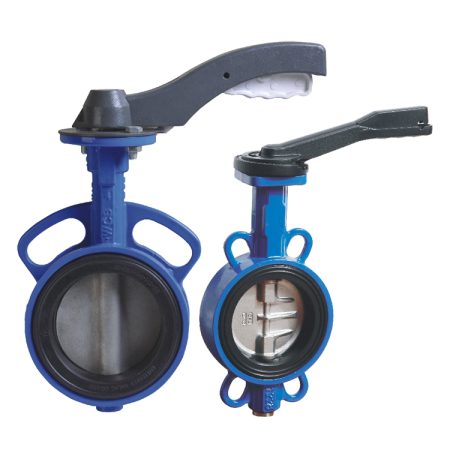
Lastly, considering factors such as maintenance and life cycle costs, as well as the actuator type, can further optimize the performance of a 12″ butterfly valve. By evaluating the long-term benefits of various designs, materials, and actuator options, a more cost-effective and efficient valve solution can be selected.
In summary, understanding the size and shape of a 12″ butterfly valve and how they affect its performance is crucial when selecting the right valve for any application. By considering factors such as disc profile, offset configuration, material compatibility, flow requirements, and life cycle costs, a suitable butterfly valve can be chosen that will provide reliable flow control, enhanced system efficiency, and a durable solution for years to come.
Recap of the importance of size and shape in butterfly valve performance
In recap, the importance of size and shape in butterfly valve performance cannot be overstated. The disc profile and offset configuration greatly influence the valve’s pressure drop, sealing capabilities, and control accuracy, directly impacting overall system efficiency and reliability. Additionally, selecting the appropriate valve size ensures optimal flow capacity and compatibility with the available space and installation requirements. By carefully considering these aspects, along with material compatibility, flow requirements, and life cycle costs, a suitable butterfly valve can be chosen to deliver consistent flow control, improved system performance, and a durable solution tailored to the specific needs of the application. Understanding the significance of size and shape in butterfly valve performance is essential for making informed decisions and ensuring long-term satisfaction with your valve selection.
Key takeaways for selecting the right 12″ butterfly valve for your application
In selecting the right 12″ butterfly valve for your application, it is essential to consider several key takeaways. First, evaluate the flow requirements and pressure drop characteristics of your system to ensure optimal valve performance and energy efficiency. Second, assess the available space and installation requirements, keeping in mind that butterfly valves offer a compact and lightweight solution for various industries. Third, prioritize material compatibility and corrosion resistance by choosing suitable materials for the valve components based on the media and operating conditions. Lastly, weigh the importance of maintenance and life cycle costs, including factors such as durability, energy consumption, and ease of servicing. By taking these crucial aspects into account, you can select a 12″ butterfly valve that provides reliable flow control, enhanced system performance, and a long-lasting solution tailored to the specific needs of your application.
Encouragement to consult with a valve expert to ensure optimal performance and longevity
When selecting a butterfly valve for your application, it is highly recommended to consult with a valve expert to ensure optimal performance and longevity. Valve specialists possess in-depth knowledge of various valve types, materials, and configurations, and can provide valuable guidance tailored to your system’s unique requirements. By collaborating with these professionals, you can tap into their expertise to make informed decisions regarding the most suitable size, shape, and materials for your butterfly valve, ultimately resulting in a more efficient and reliable solution. Moreover, consulting with a valve expert can help you navigate the complexities of maintenance and life cycle costs, ensuring that your investment delivers long-term value and satisfaction. Don’t hesitate to reach out to a valve specialist to guarantee that your chosen butterfly valve meets the specific needs of your application while offering enhanced performance, durability, and ease of maintenance.


